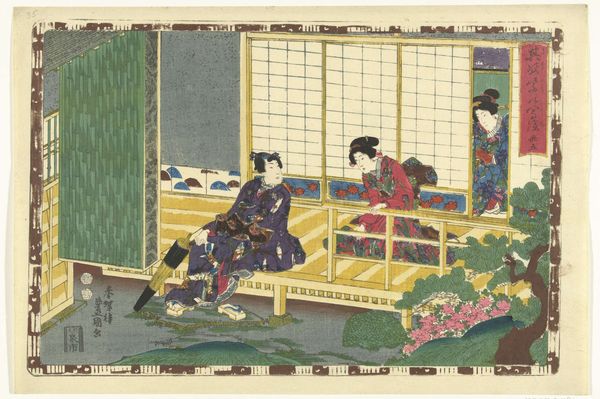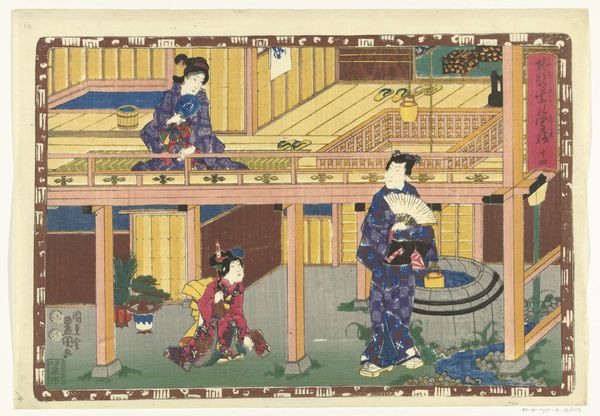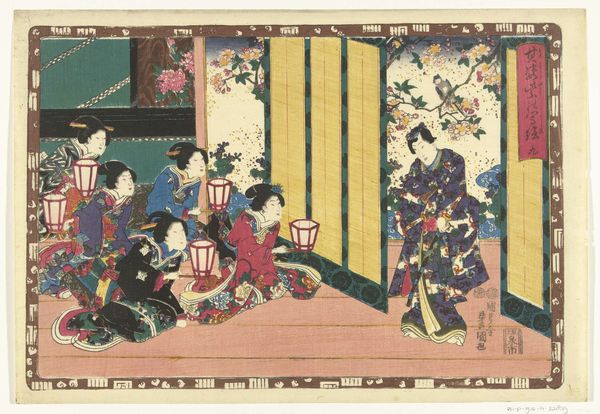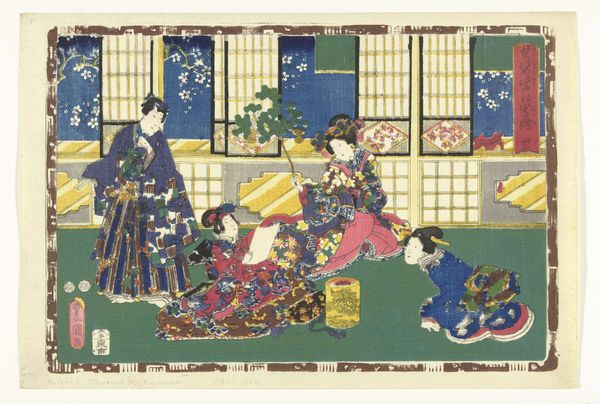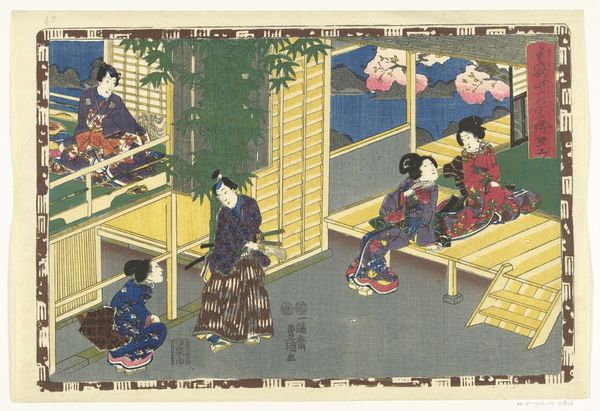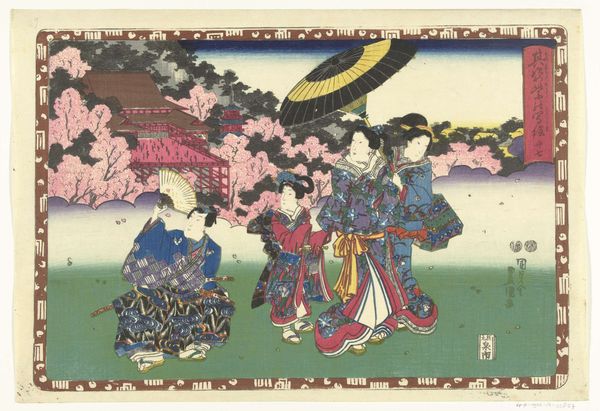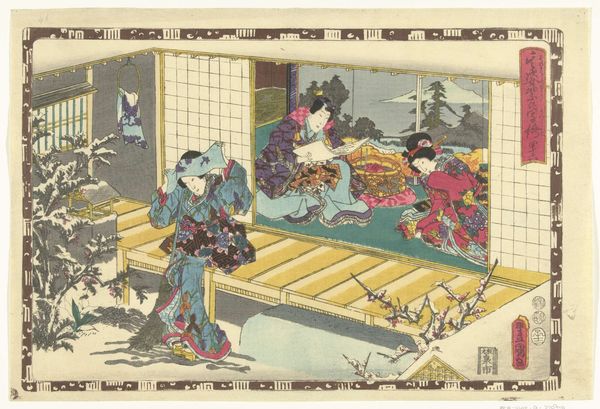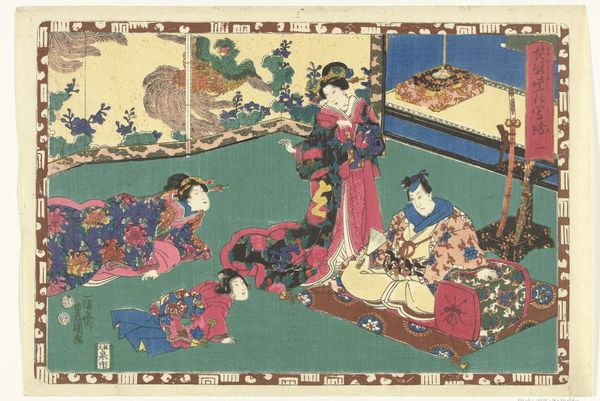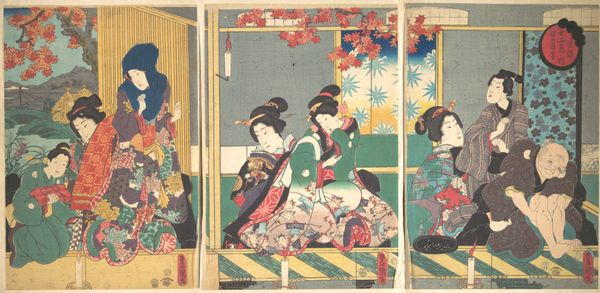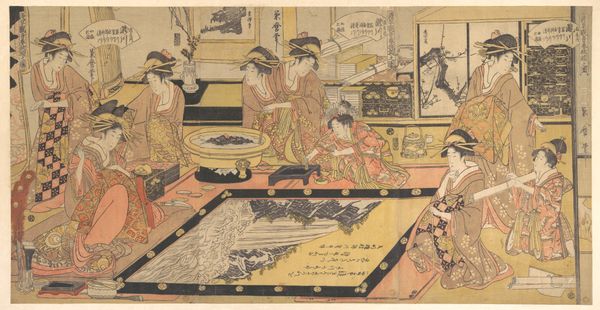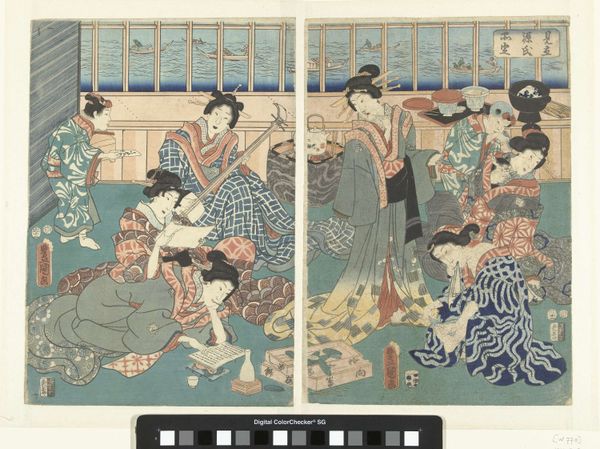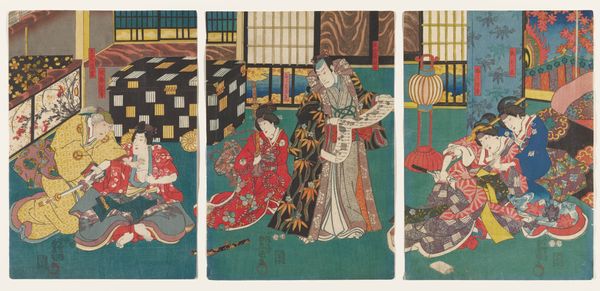
print, ink, woodblock-print
#
portrait
# print
#
asian-art
#
ukiyo-e
#
figuration
#
historical fashion
#
ink
#
woodblock-print
#
genre-painting
#
watercolor
Dimensions: height 254 mm, width 375 mm
Copyright: Rijks Museum: Open Domain
Editor: This is Utagawa Kunisada’s “Chapter 39,” a woodblock print from 1851-1853, currently at the Rijksmuseum. The interior setting gives me a peaceful, domestic feeling despite the elaborate clothing and interior decorations. What is your perspective on this genre painting, considering the historical context? Curator: This work speaks volumes about the commercialization and popularization of culture in 19th century Japan. Kunisada, a leading printmaker, was catering to a burgeoning middle class with a thirst for imagery reflecting their aspirations and idealized versions of contemporary life. The *ukiyo-e* tradition was transforming from portraying courtesans and actors for a more elite clientele to depicting genre scenes. Do you notice the detailed textile patterns? Editor: Yes, they seem so intentionally opulent and eye-catching! Is that deliberate, a part of this shift you’re describing? Curator: Precisely. The luxurious clothing and interior decorations point to a growing consumer culture, with the rising merchant class eager to display its affluence. Consider the subject, apparently taking place indoors: it's quite a departure from earlier *ukiyo-e*. And what do you think about how the background merges exterior views with interior decorations, how are they blurring and complementing one another? Editor: I hadn't really noticed how integrated the natural landscapes and the indoor setting are. Almost as though they are equally essential. It really changes the tone compared to just the figures on their own. Curator: Exactly. Kunisada here blurs the lines between reality and theatricality. Through these portraits, the artist highlights not only individual beauty but also communicates social ideals about fashion, aesthetics, and the domestic space during that transformative period. The way this scene has been preserved really demonstrates its success, it continues to fascinate almost two centuries later. Editor: It's fascinating to think about how prints like these participated in creating those ideals, not just reflecting them. Thank you! Curator: It's been a pleasure. Thinking about how artistic representations influence, shape, and reflect society gives us a richer appreciation.
Comments
No comments
Be the first to comment and join the conversation on the ultimate creative platform.
